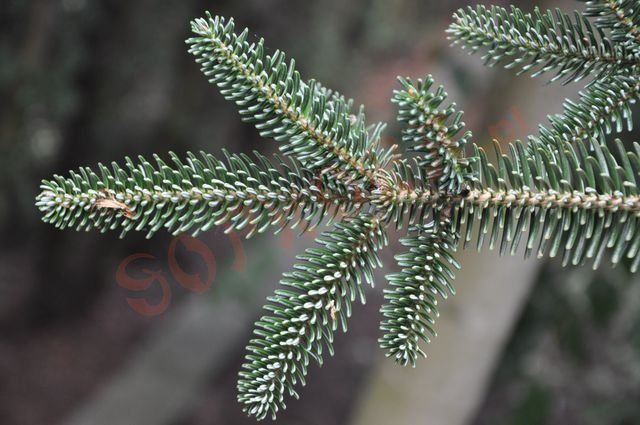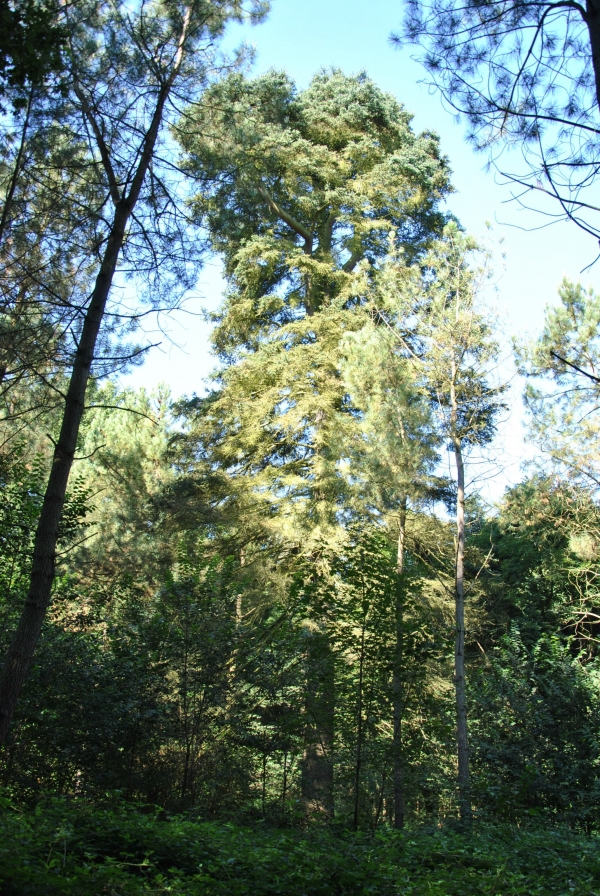Abies × vilmorinii, first described in 1901 by Maxwell Tylden Masters (1833-1907), is commonly known as Vilmorin's fir. The epithet was named in honor of Pierre Louis François Lévêque de Vilmorin (1816-1860), who is famous for developing a theory of heredity in plants and recognized that it was possible to select certain characteristics of a plant and develop new varieties displaying the chosen characteristics. In 1856, de Vilmorin published his "Note on the Creation of a New Race of Beetroot and Considerations on Heredity in Plants," establishing the theoretical groundwork for the modern seed-breeding industry.
This plant is a artificial hybrid of Greek fir (A. cephalonica) and Spanish fir (A. pinsapo), produced by Vilmorin in 1868 in Verrièrre-le-Buisson, near Paris, France.
Description. Vilmorin's fir it a large-growing coniferous tree with a broadly pyramidal structure and a trunk up to 3 feet (1 m) wide at breast height. The bark is reddish and wrinkled. Branches are glabrous in texture, ashy-gray, stout and very long. Branchlets are crowded, widely decurving or entirely hanging down.
Leaves point directly upward, nearly pectinate on the underside of the branchlets, 0.8 to 1.2 inches (2 - 3 cm) long and 0.12 inch (3 mm) wide, with a sharply-pointed apex, leathery, stiff and dark-green above; bluish-green and strongly keeled beneath.
Seed cones are abundant, spindle-shaped, narrowed to the base, shortly conical at the apex, 5.5 to 8 inches (14 - 20 cm) long and 1.6 to 2 inches (4 - 5 cm) broad.
The Champion Tree can be found in Arboretum Tervuren, Tervuren, Belgium. The 112-year-old specimen stands 101.75 feet (31.80 m) tall with a 11.0 foot (3.47 m) girth when it was measured in 2011.

